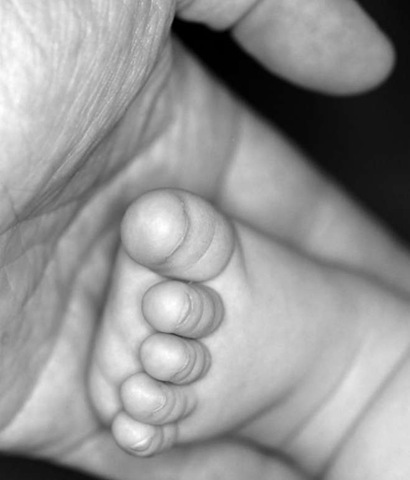One of the earliest embryonic stages after the fertilized egg implants into the uterine wall is the gastrula, when the fertilized egg has gone through several divisions and the cells can be classified into three groups that have first begun to show differentiated characteristics. These groups are called germ layers and represent some of the first lineage specific stem cells in embryonic development. These differentiated cells can be grouped into three types, which are layered across the gastrula. Each layer, called a germ layer, will eventually become certain types of tissues in the adult. These layers are the endoderm and ectoderm, and in between them the mesoderm.
The ectoderm, the outermost of the three germ cell layers, eventually develops into the epidermis and hair.
The endoderm is so called because it is in the innermost layer of the three germ layers. It eventually becomes many of our “internal linings,” such as cells lining most of the gastrointestinal tract as well as those cells lining the lungs, liver, pancreas, all other glands opening into the gastrointestinal tract, and some other organs such as the upper urogenital tract and female vagina. Additionally, the endoderm cells give rise to the colon, stomach, intestines, lungs, liver, and pancreas.
The ectoderm, or outermost layer of germ cells, eventually becomes our “outer lining” in the form of epidermis (outermost skin layer) and hair. The ectoderm is also the precursor to mammary glands and the central and peripheral nervous systems.
Finally, the layer in between the endoderm and the ectoderm is called the mesoderm. The meso-derm will develop into everything else—the dermis of the skin, the heart, our musculature, urogenital system, bones, and bone marrow and therefore blood. The mesoderm is the germ layer that distinguishes evolutionarily higher life forms from lower life forms with radial body symmetry. The mesoderm allows higher life forms to have an internal body cavity in which the organs can reside, protected from the movements and shocks of the outer body layers by fluids and connective tissue.
Because of the enormous ability of these germ layers to differentiate into a vast variety of organs and tissues, they attract much attention from scientists looking to determine how it is that humans develop. In stem cell jargon, a pluripotent stem cell is one that can become any of the three germ layers. Multipotent stem cells may give rise to lineages restricted to one dermal layer, or even one lineage within a dermal layer. For example, it should be possible to derive a mesoderm stem cell and guide its differentiation into a new bone such as a femur for a patient with a birth defect, or to develop new bone marrow for a patient with lymphoma. If these lineages could be reliably produced from human embryonic stem cells or induced pluripo-tent stem cells, they would represent an important source of tissue for both understanding development and potentially for new cell based therapies.
Germ layer cells are not the same cell population as germ cells. The term germ cell refers to the reproductive cells, or gametes, in the reproductive organs. For example, human germ cells are eggs and sperm.

